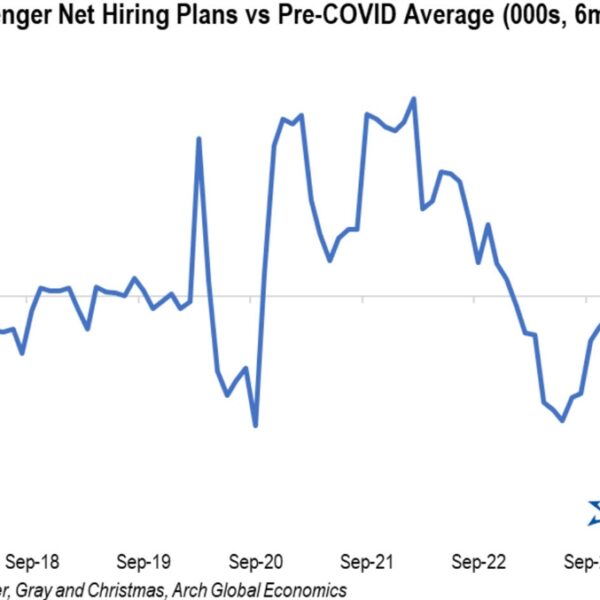
MarsBars
Investing in high-yield stocks, if done correctly, can generate phenomenal long-term risk-adjusted total returns while also delivering an ever-growing stream of passive income that reduces the sequence of return risk The approach is like a snowball, growing as it gains momentum.
This approach can provide for a rewarding retirement that’s relatively low stress when the markets get volatile. This is because you can live off the passive income from your investments rather than having to sell shares consistently, even if the market goes into a deep and prolonged bear market. That said, there are four important qualities that investors must insist on when investing in high-yield stocks to achieve such impressive long-term total returns. These are:
1. A Defensive and Durable Business Model: The company should operate in a sector that provides essential services or products that are likely to remain in demand regardless of economic conditions.
2. A Strong Balance Sheet: The company should have low debt levels relative to its earnings and strong liquidity, ensuring it can weather economic downturns without having to cut its dividend.
3. A Sustainable and Growing Dividend Payout: The dividend should be well covered by the company’s cash flows and have a forward outlook for dividend growth that at least matches or exceeds inflation.
4. A High Enough Dividend Yield: The yield should be sufficient to allow you to realistically accumulate enough passive income to fund living expenses once you retire.
In this article, we will share 10 stocks that meet these criteria as well as an alternative set of five broadly diversified funds that could provide a similarly structured, high-yield, high-quality portfolio. While the funds will likely generate less dividend growth, lower overall yield, and lower total returns, they offer greater diversification and passivity.
10 Big Dividend Stocks
The 10 stocks we’re going to share come from our five favorite sectors for finding quality, high-yield stocks: Midstream, infrastructure, REITs, BDCs, and alternative asset managers. We like these sectors because they tend to be quite defensive and durable in nature, generating very stable, long-dated cash flows and providing services that are in high demand and likely to remain so for the long term.
From these sectors, we focus on businesses with strong balance sheets, attractive dividends that are comfortably covered by cash flows, and potential to grow at a rate that meets or beats inflation over the long term.
Midstream Sector
Two quality picks in the midstream sector are Enterprise Products Partners (EPD) and Enbridge (ENB). EPD has an A+ credit rating from S&P, the top credit rating in the sector. It offers a dividend yield of around 7.5%, with its distribution covered by 1.7 times with distributable cash flow. Nearly all of its cash flows come from long-term contracts, making it resistant to macroeconomic and energy market volatility. Moreover, EPD has a long track record of growing its payout at a mid-single-digit CAGR, and it expects to continue doing so, ensuring that its dividends should meet or exceed inflation over the long term.
Meanwhile, ENB holds a BBB+ credit rating from S&P and offers a dividend yield of about 6.9%, covered by ~1.5 times with distributable cash flow. ENB’s cash flows are similarly protected by long-term contracts and regulated assets, ensuring stability even in volatile energy markets and weak economic conditions. Last but not least, like EPD, ENB is growing its payout at a mid-single digit rate and is expected to continue this trend, offering reliable income growth for investors that should meet or exceed the rate of inflation over time.
Infrastructure Sector
In the infrastructure space, two subsidiaries of Brookfield (BAM)(BN) are particularly attractive: Brookfield Renewable Partners (BEP) and Brookfield Infrastructure Partners (BIP). BEP offers a yield of around 6% and expects to grow its underlying cash flows at a rate exceeding 10% annually for the foreseeable future, with distributions expected to grow between 5% to 9% per year. BEP’s BBB+ credit rating reflects its strong balance sheet, and its assets are well diversified both geographically and by type. Additionally, BEP’s focus on renewable power generation, including hydropower, solar, wind, nuclear, and battery storage, positions it well for future growth, especially as it capitalizes on the AI boom through significant contracts like its deal with Microsoft.
Meanwhile, BIP offers a yield of about 5% and similarly expects to grow its cash flows at a double-digit rate. It has a BBB+ credit rating and is diversified across the midstream, utilities, transportation, and data sectors, including data centers and communication towers. BIP is also poised to benefit from the AI boom, particularly through its data center assets.
Both BEP and BIP issue K-1 tax forms, but there are economic equivalent versions that generate 1099s instead of K-1s for those who prefer to avoid the additional tax filing complexity.
REIT Sector
In the REIT sector, two high-quality, high-yield stocks are W. P. Carey (WPC) and Realty Income (O). WPC offers a forward dividend yield of nearly 6% and has a BBB+ credit rating. The majority of its rental income comes from industrial and warehouse real estate, along with CPI-linked leases. This is significant because industrial and warehouse real estate is currently in favor, offering a strong growth runway for WPC as well as fairly strong demand for its properties. Additionally, its CPI-linked leases help offset inflation risk, ensuring that WPC’s income grows with inflation. Additionally, WPC trades at a small single-digit premium to its net asset value (NAV), while many of its peers trade at much higher premiums, making it an attractive buy.
O is another attractive triple net lease REIT, with an A- credit rating, which is among the best in the REIT sector. It also offers a dividend yield of more than 5% and has a track record of well over 25 years of consecutive dividend growth, making it a Dividend Aristocrat. Additionally, Realty Income’s large, well-diversified portfolio makes it well-equipped to weather economic storms, and combines with its contractual rent bumps and its reinvested retained cash flow to help ensure that its dividend remains safe and continues to grow at a rate that should at least keep pace with inflation over the long term.
Business Development Companies (BDCs)
In the BDC (BIZD) space, two stocks that are particularly solid dividend stocks are Golub Capital BDC (GBDC) and Ares Capital (ARCC).
GBDC has a strong underwriting track record, low non-accrual rates, and a solid balance sheet with a leverage ratio of around one. It also has an investment-grade credit rating and significant liquidity. Moreover, GBDC invests primarily in senior secured loans, offering a defensive posture in the event of an economic downturn. Last, but not least, it provides a dividend yield of around 11%, which is well covered by net investment income, providing a margin of safety for its sustainability in the event that interest rates decline meaningfully (since its income mostly comes from floating-rate loans) and/or non-accruals spike in the event of an economic downturn.
ARCC also boasts an impressive underwriting record and a strong balance sheet. Like GBDC, ARCC focuses primarily on senior secured loans, making it relatively defensive in nature. Moreover, its dividend yield is also attractive, with a yield of over 9% that’s well covered by net investment income. Last, but not least, it has a strong track record of sustaining and growing dividends through multiple economic cycles, combining with its substantial spill-back income to give investors confidence in the sustainability of the dividend over the long term.
Alternative Asset Managers
In the alternative asset management space, Brookfield Asset Management (BAM) and Blue Owl Capital (OWL) stand out as ideal dividend stocks based on our criteria.
BAM generates very stable fee-related earnings from long-dated or permanent assets under management, providing a steady stream of income. On top of that, the company expects to grow its fee-related earnings at a double-digit annualized rate for the foreseeable future. Last, but not least, BAM has no debt and has billions of dollars in cash on its balance sheet, limiting its downside risk while leaving it with plenty of flexibility to invest in opportunistic acquisitions to create value for shareholders. When combined with its ~4% NTM dividend yield, BAM looks like a pretty attractive dividend growth stock right now.
OWL also enjoys stable fee-related earnings and is guiding for strong dividend growth in the mid to high teens annually. With a dividend yield of ~5% and an investment-grade credit rating, OWL also looks like a stock that matches our four criteria.
5 Big Dividend Funds
For investors seeking a more passive and diversified approach, here are five funds that provide exposure to high-yield sectors while offering diversification and ease of management:
1. The Schwab U.S. Dividend Equity ETF (SCHD) offers broad exposure to high-yielding, established companies across various sectors with a focus on dividend growth and a 3.4% dividend yield. Moreover, it has generated very attractive dividend growth over the course of its tenure, with its most recent dividend growth rates in the high single digits on an annualized basis. It also charges a very low 0.06% expense ratio, making it a highly efficient investment.
2. The JPMorgan Nasdaq Equity Premium Income ETF (JEPQ) provides exposure to mega cap tech stocks that do not pay much in the way of dividends, while employing a notional covered call strategy to generate attractive monthly distributions for investors to the tune of a 9.3% yield. This makes it a valuable diversification instrument for investors who want to focus on income but still want exposure to the technology space.
3. The ALPS Alerian MLP ETF (AMLP) focuses on energy infrastructure master limited partnerships (MLPs), which is a sector that is largely missing from SCHD and JEPQ, thereby providing enhanced diversification while also contributing a sky-high 7.9% dividend yield that should grow at a pace that meets or beats inflation moving forward.
4. The Vanguard Real Estate Index Fund ETF Shares (VNQ) offers exposure to a broad range of real estate sectors, providing enhanced diversification to SCHD, JEPQ, and AMLP which lack any meaningful exposure to this sector. Moreover, it charges a mere 0.13% expense ratio and provides a reasonably attractive 3.8% dividend yield that should grow at a rate that meets or exceeds inflation over time.
5. Finally, the Utilities Select Sector SPDR Fund ETF (XLU) focuses on the utility sector, known for generating stable, high-yielding dividends. With a mere 0.09% expense ratio, XLU is a very efficient way to gain exposure to a sector that is durable and defensive and combines decent current yields with strong long-term growth. This is particularly useful given that SCHD, JEPQ, AMLP, and VNQ lack any meaningful exposure to the utility sector.
Investor Takeaway
This diversified approach, combining individual stocks or funds, can help investors build a robust, high-yield portfolio that delivers attractive income while maintaining growth potential. Whether you prefer a more active approach with individual stocks or a passive strategy with ETFs, focusing on defensive, high-yield investments with strong balance sheets and growing dividends can help you achieve your financial goals with lower risk.














